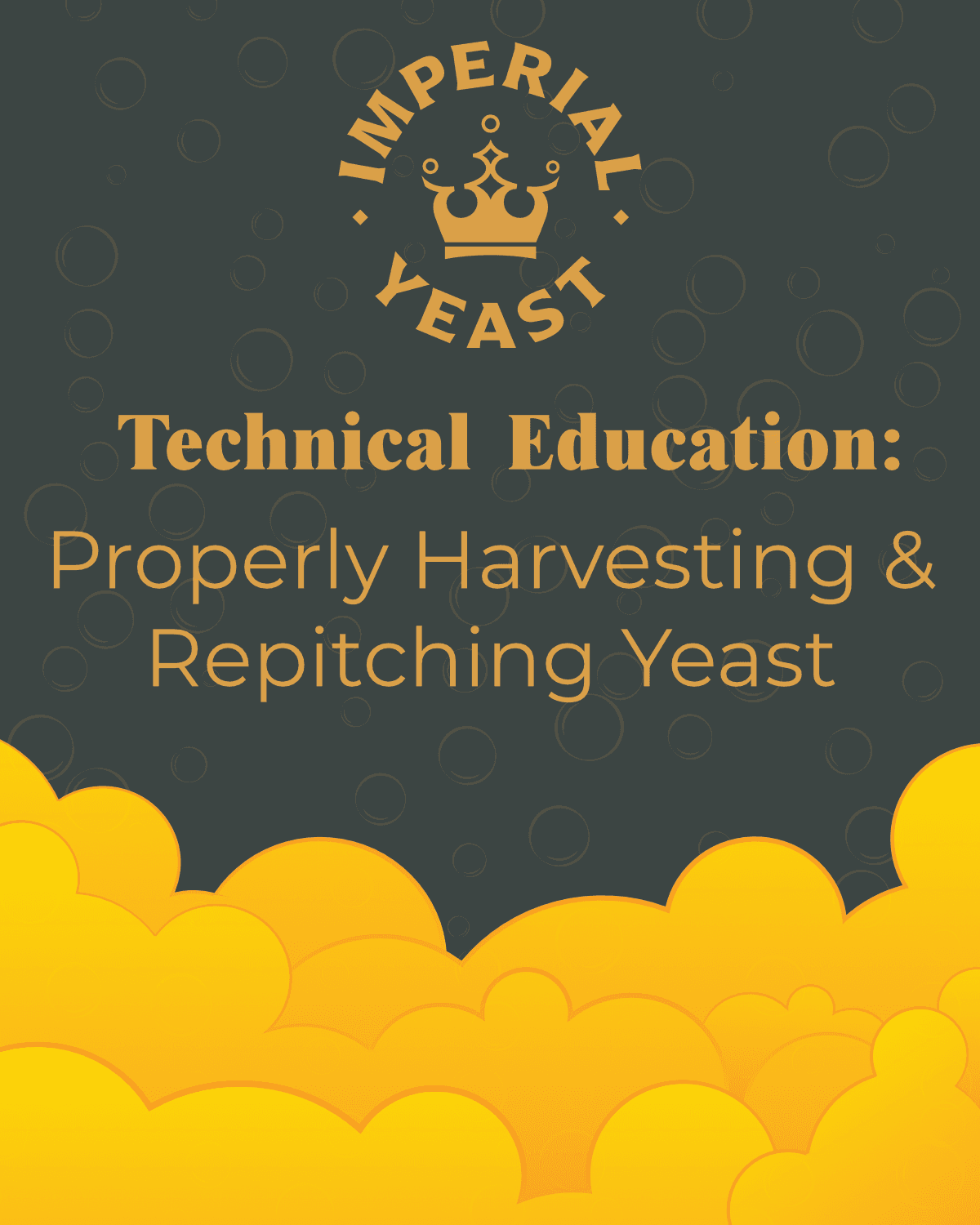The optimal time to harvest your yeast is immediately after reaching terminal gravity (TG) and when enough yeast has settled into a thick slurry in the cone of the fermenter. Properly harvesting and storing yeast will allow for repitching 5-10 (or more) generations, and will significantly reduces your yeast cost.
Harvesting & Repitching
- 24 hours prior to harvesting, dump any trub and hop particles from the bottom of the fermenter.
- With a fully sanitized yeast brink, sanitized yeast harvesting gear, and a sanitized tank drain port, you can begin harvesting your yeast. Ideally, this is done with the brink on a scale. This allows you to see how much yeast you are harvesting and the rate at which the yeast is moving from the cone in the tank to the brink.
- Harvest at a slow enough rate to avoid creating a hole through the yeast cone.
- Once the appropriate amount of yeast has been harvested, seal the brink and the fermenter. Be sure to relieve any pressure in the yeast brink. If you are not immediately repitching the yeast, keep the yeast as close to 33ºF as possible and ensure that pressure does not build up in the brink.
- Prior to pitching yeast (within a few hours), homogenize the brink and perform a cell count.
- During knockout, pitch yeast from the brink into the fermenter using fully sanitized gear. Doing this with the brink on a scale will allow you to accurately pitch the appropriate weight of yeast slurry.
General Notes
- Harvest and repitch BY WEIGHT! Yeast slurry contains CO2 bubbles and cannot be consistently measured by volume.
- Less flocculent strains may need more time for a thick slurry to form.
- If you don’t repitch immediately, monitor the yeast brink and avoid pressure buildup.
- Store in a cooler as close to 33ºF as possible.
- Use within 3 days for best results as viability will decline during storage.
- If you have the ability, check the viability of your yeast using a microscope and hemocytometer or a cell-counter.
